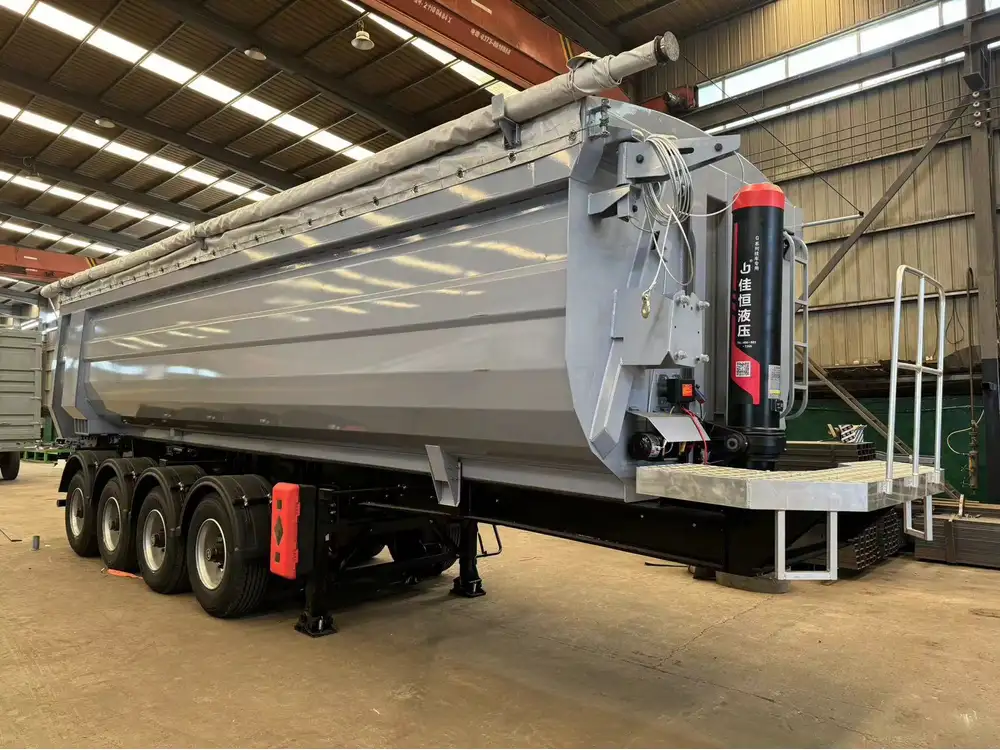When it comes to handling heavy loads in construction, landscaping, or other commercial applications, a dump trailer plays an invaluable role. In this detailed guide, we explore the capacity of a 7×14 dump trailer, delve into its specifications, and address critical factors that influence its holding potential. Additionally, we provide insights that can help you determine the most suitable options for your needs.
What Constitutes a 7×14 Dump Trailer?
Dimensions and Specifications
To fully understand the capacity of a 7×14 dump trailer, it’s essential to define its core dimensions:
- Length: 14 feet
- Width: 7 feet
- Height: Varies depending on design but commonly around 2 to 3 feet
- Weight Capacity: Ranges widely based on the model and materials used in construction

Weight Classes
Dump trailers are categorized into different weight classes which affect their load-bearing capabilities:
- Single Axle Trailers: Typically can handle between 3,000 to 5,000 pounds or approximately 1.5 to 2.5 tons.
- Dual Axle Trailers: Can usually accommodate between 7,000 to 12,000 pounds or approximately 3.5 to 6 tons.
These classifications are crucial in understanding how many tons a 7×14 dump trailer can carry, as they reflect the structural integrity and design intended for particular tasks.
Load Capacity Considerations
Factors Impacting Capacity
When evaluating how many tons a 7×14 dump trailer can hold, several dynamic elements come into play:
| Factor | Description |
|---|---|
| Trailer Construction | The materials (steel, aluminum, etc.) and the build quality significantly affect durability. |
| Axle Configuration | Single vs. dual axle designs directly impact maximum payload limits. |
| Tire Specifications | Adequately rated tires ensure safety while carrying heavy loads, influencing overall capacity. |
| Load Distribution | Properly distributing the weight throughout the trailer assists in maximizing its capacity. |
| Legal Regulations | Local laws may govern maximum permissible load limits for trailers, affecting use cases. |
| Terrain Type | Bumpy or uneven terrain can influence how much weight a trailer can safely transport. |

Effective Weight Strategies
To optimize your load:
- Balance the Load: Ensure weight is evenly distributed. Overloading one side can lead to balance issues and potential accidents.
- Know Your Material Density: For example, gravel weighs more per cubic foot than mulch, meaning less volume can equal more weight.
- Use Load Limits: Always pay attention to the manufacturer-provided specifications regarding weight limits.
Calculating Capacity: Practical Examples
To offer a practical understanding of a 7×14 dump trailer’s capacity, let’s break down several common scenarios:
Example Loads
| Material | Volume (Cubic Yards) | Estimated Weight (Tons) |
|---|---|---|
| Topsoil | 5 | 5 tons |
| Gravel | 7 | 7 tons (approximate) |
| Mulch | 10 | 2 tons |
| Construction Debris | 3 | 4.5 tons |
Note: The weight estimates are approximations and can vary based on material density and moisture content.

Real-World Application
- Landscaping Needs: If transporting mulch, a 7×14 dump trailer can efficiently carry 10 cubic yards, translating to roughly 2 tons.
- Construction Projects: When dealing with gravel, loading up to 7 cubic yards is realistic, reaching cumulative weights of approximately 7 tons, comfortably fitting within a dual axle configuration.
Regulations and Safety Compliance
Understanding Legal Load Limits
Local and state regulations often impose restrictions on how much weight can legally be transported. It is crucial to check the laws in your area to avoid penalties. This can include specific laws governing:
- Towing Capacities
- Weight Limits on Public Roads
- Industry-Specific Regulations

Safety Measures
Operating a dump trailer, especially while hauling heavy loads, calls for strict adherence to safety protocols. Consider the following:
- Regular Maintenance: Ensure tires, brakes, and hitching systems are in good condition.
- Proper Training: Personnel should be well-trained in handling vehicles of this type.
- Load Securing: Use appropriate tarps or nets to secure loads, preventing material spillage during transport.
Braking Distance
A fully loaded dump trailer will increase the braking distance significantly. It’s prudent to allow for extra stopping space on the road, particularly in adverse weather conditions.
Advanced Considerations for Optimal Usage

Customization Options
When investing in a 7×14 dump trailer, various optional features enhance functionality. Look for:
- Hydraulic Lift Systems: Allow for easy unloading and improve efficiency on the job site.
- Side Extensions: Provide additional height for oversized materials, increasing overall volume without compromising capacity.
- Reinforced Floors: Especially beneficial for transporting heavy materials that may otherwise damage standard flooring.
Seasonal Considerations
Weight and material handling can also vary by season:
- Winter Use: Snow and ice may add unexpected weight or impact load handling.
- Rainy Conditions: Wet materials can significantly increase weights, affecting loading strategies and capacity.
Conclusion
In summary, the capacity of a 7×14 dump trailer is shaped by a combination of design specifications, weight regulations, and practical load management strategies. Understanding how these factors interplay allows operators to optimize their use of the trailer while ensuring compliance with safety regulations. Ultimately, for those venturing into the realm of construction or landscaping, selecting the right trailer, like the 7×14 dump model, can significantly enhance operational efficiency.
With the right approach and informed decision-making, users can confidently determine how many tons their 7×14 dump trailer can hold, ensuring that every job is handled with precision and care. Armed with this knowledge, you are well-equipped to tackle your material transport needs head-on.



